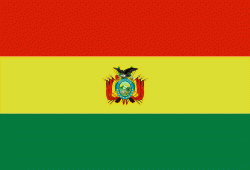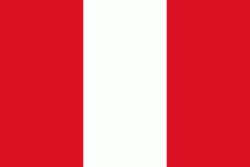Aymara language
Aymara (also Aymar aru) is an Aymaran language spoken by the Aymara people of the Bolivian Andes. It is one of only a handful of Native American languages with over one million speakers. Aymara, along with Spanish and Quechua, is an official language in Bolivia and Peru. It is also spoken, to a much lesser extent, by some communities in northern Chile, where it is a recognized minority language.
Some linguists have claimed that Aymara is related to its more widely spoken neighbor, Quechua. That claim, however, is disputed. Although there are indeed similarities, like the nearly identical phonologies, the majority position among linguists today is that the similarities are better explained as areal features rising from prolonged cohabitation, rather than natural genealogical changes that would stem from a common protolanguage.
Aymara is an agglutinating and, to a certain extent, a polysynthetic language. It has a subject–object–verb word order. It is based on a three value logic system. Aymara is normally written using the Latin alphabet, but in 2015 a full writing system was developed using the Korean script Hangeul.
The ethnonym "Aymara" may be ultimately derived from the name of some group occupying the southern part of what is now the Quechua speaking area of Apurímac. Regardless, the use of the word "Aymara" as a label for this people was standard practice as early as 1567, as evident from Garci Diez de San Miguel's report of his inspection of the province of Chucuito (1567, 14; cited in Lafaye 1964). In this document, he uses the term aymaraes to refer to the people. The language was then called Colla. It is believed that Colla was the name of an Aymara nation at the time of conquest, and later was the southernmost region of the Inca empire Collasuyu. However, Cerrón Palomino disputes this claim and asserts that Colla were in fact Puquina speakers who were the rulers of Tiwanaku in the first and third centuries (2008:246). This hypothesis suggests that the linguistically-diverse area ruled by the Puquina came to adopt Aymara languages in their southern region.
In any case, the use of "Aymara" to refer to the language may have first occurred in the works of the lawyer, magistrate and tax collector in Potosí and Cusco, Polo de Ondegardo. This man, who later assisted Viceroy Toledo in creating a system under which the indigenous population would be ruled for the next 200 years, wrote a report in 1559 entitled 'On the lineage of the Yncas and how they extended their conquests' in which he discusses land and taxation issues of the Aymara under the Inca empire.
More than a century passed before "Aymara" entered general usage to refer to the language spoken by the Aymara people (Briggs, 1976:14). In the meantime the Aymara language was referred to as "the language of the Colla". The best account of the history of Aymara is that of Cerrón-Palomino, who shows that the ethnonym Aymara, which came from the glottonym, is likely derived from the Quechuaized toponym ayma-ra-y 'place of communal property'. The entire history of this term is thoroughly outlined in his book, Voces del Ande (2008:19–32) and Lingüística Aimara.
The suggestion that "Aymara" comes from the Aymara words "jaya" (ancient) and "mara" (year, time) is almost certainly a mistaken folk etymology.
Some linguists have claimed that Aymara is related to its more widely spoken neighbor, Quechua. That claim, however, is disputed. Although there are indeed similarities, like the nearly identical phonologies, the majority position among linguists today is that the similarities are better explained as areal features rising from prolonged cohabitation, rather than natural genealogical changes that would stem from a common protolanguage.
Aymara is an agglutinating and, to a certain extent, a polysynthetic language. It has a subject–object–verb word order. It is based on a three value logic system. Aymara is normally written using the Latin alphabet, but in 2015 a full writing system was developed using the Korean script Hangeul.
The ethnonym "Aymara" may be ultimately derived from the name of some group occupying the southern part of what is now the Quechua speaking area of Apurímac. Regardless, the use of the word "Aymara" as a label for this people was standard practice as early as 1567, as evident from Garci Diez de San Miguel's report of his inspection of the province of Chucuito (1567, 14; cited in Lafaye 1964). In this document, he uses the term aymaraes to refer to the people. The language was then called Colla. It is believed that Colla was the name of an Aymara nation at the time of conquest, and later was the southernmost region of the Inca empire Collasuyu. However, Cerrón Palomino disputes this claim and asserts that Colla were in fact Puquina speakers who were the rulers of Tiwanaku in the first and third centuries (2008:246). This hypothesis suggests that the linguistically-diverse area ruled by the Puquina came to adopt Aymara languages in their southern region.
In any case, the use of "Aymara" to refer to the language may have first occurred in the works of the lawyer, magistrate and tax collector in Potosí and Cusco, Polo de Ondegardo. This man, who later assisted Viceroy Toledo in creating a system under which the indigenous population would be ruled for the next 200 years, wrote a report in 1559 entitled 'On the lineage of the Yncas and how they extended their conquests' in which he discusses land and taxation issues of the Aymara under the Inca empire.
More than a century passed before "Aymara" entered general usage to refer to the language spoken by the Aymara people (Briggs, 1976:14). In the meantime the Aymara language was referred to as "the language of the Colla". The best account of the history of Aymara is that of Cerrón-Palomino, who shows that the ethnonym Aymara, which came from the glottonym, is likely derived from the Quechuaized toponym ayma-ra-y 'place of communal property'. The entire history of this term is thoroughly outlined in his book, Voces del Ande (2008:19–32) and Lingüística Aimara.
The suggestion that "Aymara" comes from the Aymara words "jaya" (ancient) and "mara" (year, time) is almost certainly a mistaken folk etymology.
Country
-
Bolivia
Bolivia, officially the Plurinational State of Bolivia, is a landlocked country located in western-central South America. It is bordered by Brazil to the north and east, Paraguay to the southeast, Argentina to the south, Chile to the southwest and Peru to the west. The seat of government and executive capital is La Paz, while the constitutional capital is Sucre. The largest city and principal industrial center is Santa Cruz de la Sierra, located on the Llanos Orientales (tropical lowlands), a mostly flat region in the east of the country.
The sovereign state of Bolivia is a constitutionally unitary state, divided into nine departments. Its geography varies from the peaks of the Andes in the West, to the Eastern Lowlands, situated within the Amazon basin. One-third of the country is within the Andean mountain range. With 1098581 km2 of area, Bolivia is the fifth largest country in South America, after Brazil, Argentina, Peru, and Colombia (and alongside Paraguay, one of the only two landlocked countries in the Americas), the 27th largest in the world, the largest landlocked country in the Southern Hemisphere, and the world's seventh largest landlocked country, after Kazakhstan, Mongolia, Chad, Niger, Mali, and Ethiopia. -
Peru
Peru (Perú ; Quechua: Piruw ; Piruw ), officially the Republic of Peru, is a country in western South America. It is bordered in the north by Ecuador and Colombia, in the east by Brazil, in the southeast by Bolivia, in the south by Chile, and in the south and west by the Pacific Ocean. Peru is a megadiverse country with habitats ranging from the arid plains of the Pacific coastal region in the west to the peaks of the Andes mountains extending from the north to the southeast of the country to the tropical Amazon basin rainforest in the east with the Amazon River. Peru has a population of over 34 million, and its capital and largest city is Lima. At 1,285,216 km2 (496,225 sq mi), Peru is the 19th largest country in the world, and the third largest in South America.
Peruvian territory was home to several cultures during the ancient and medieval periods, and has one of the longest histories of civilization of any country, tracing its heritage back to the 10th millennium BCE. Notable pre-colonial cultures and civilizations include the Caral-Supe civilization (the earliest civilization in the Americas and considered one of the cradles of civilization), the Nazca culture, the Wari and Tiwanaku empires, the Kingdom of Cusco, and the Inca Empire, the largest known state in the pre-Columbian Americas.
